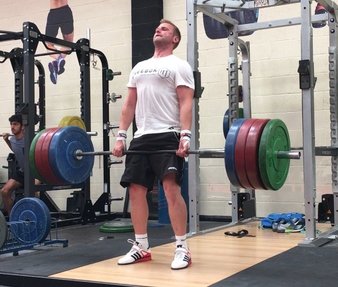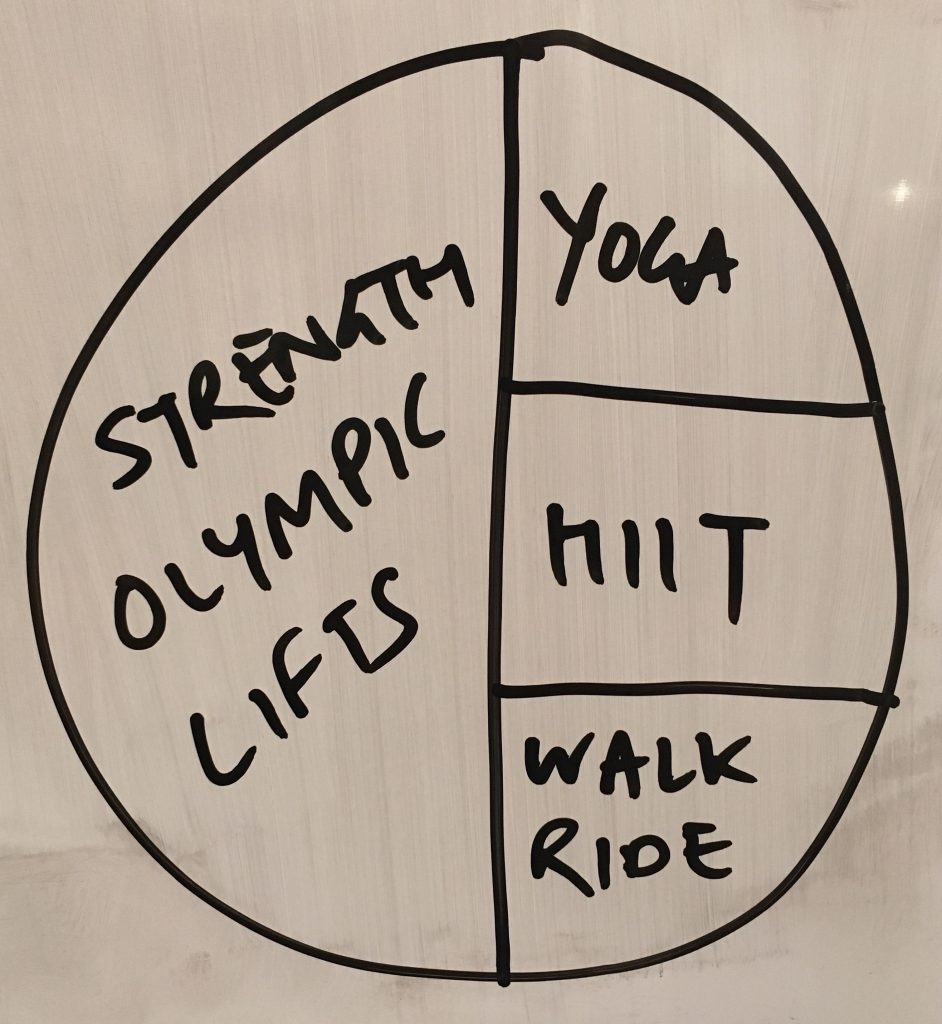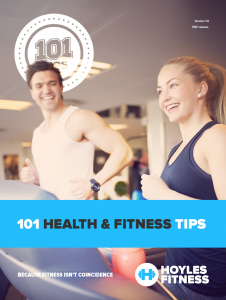General Physical Preparedness – What, Why, How?
General Physical Preparedness – The Definition of Fitness
We hear about general fitness all of the time, but what does fitness look like? What the hell is ‘general fitness’ anyway? What we think of as general fitness has been more accurately described in fitness circles as ‘GPP’ or ‘general physical preparedness’.
In this article I’m going to explore the topic of general physical preparedness and explain the what, the why and the how.
The problem with general fitness is that it’s almost impossible to quantify. It’s relative to the individual and as a result no universally-agreed measure of general physical preparedness exists – so much so that when researching for this piece I hit a wall of conjecture and nonsense.
I’m going to break down this idea of general fitness/general physical preparedness and explain what it is, how we go about achieving it and why it’s an important thing to train for.
By the way, for the purposes of this article, I will now refer to general fitness as general physical preparedness.
General Physical Preparedness – What?
When researching for this article, the most sense I found came in an old CrossFit journal, whereby general physical preparedness was described as this…
A strong work capacity across broad time and modal domains.
In English, this means the ability to perform a wide range of physical tasks requiring varied movements, loads and durations.
I’m going to stick with the CrossFit definition of fitness and general physical preparedness for the duration of the article, because they’re the only ones to come close to clearly defining this thing we call ‘fitness’.
Breaking down the concept of fitness further, CrossFit identified 10 ‘General Physical Skills’ that collectively outline the constituent parts of physical fitness. The general physical skills and an explanation of each are listed below…
General Physical Skills
- Cardiovascular/respiratory endurance – the ability of body systems to gather, process, and deliver oxygen.
- Stamina – The ability of body systems to process, deliver, store, and utilize energy.
- Strength – The ability of a muscular unit, or combination of muscular units, to apply force.
- Flexibility – The ability to maximize the range of motion at a given joint.
- Power – The ability of a muscular unit, or combination of muscular units, to apply maximum force in minimum time.
- Speed – The ability to minimize the time cycle of a repeated movement.
- Coordination – The ability to combine several distinct movement patterns into a singular distinct movement.
- Agility – The ability to minimize transition time from one movement pattern to another.
- Balance – The ability to control the placement of the bodies center of gravity in relation to its support base.
- Accuracy – The ability to control movement in a given direction or at a given intensity.
The aim with general physical preparedness is to be a good physical all-rounder, not say, a strength specialist. A true all-rounder will posses a balance of all of the general physical skills.
So let’s go back to that definition of fitness and break it down further…
A strong work capacity across broad time and modal domains.
A strong work capacity could be described as ‘stamina’. But that word alone doesn’t tell the whole story.
Stamina is a relative term – relative to the effort and the energy system being used. Stamina could technically be described as strength moves, repeated frequently.
Here’s how I’d describe stamina to make it more situationally-specific than the CrossFit definition above…
Stamina = Load x Number of Repetitions
When the load is light, the expectation is that the athlete would be able to perform a lot of repetitions. As the load increases, the expectation is the number of repetitions would reduce.
At a low intensity, a person may be able to run for 3 hours. You may think of this as a strong work capacity.
Equally though, the ability to lift a heavy load repeatedly for 60 seconds or more is also an indicator of a strong work capacity. The fact that the duration is shorter is made significantly less relevant by the increased load and intensity. This is known as ‘strength endurance’.
The point being, work capacity and stamina aren’t purely the ability to run, cycle, swim etc for hours. Work capacity is relative to load.
A 400m hurdler may only compete for 46 seconds, but given the intensity and load of their event, they still have fantastic work capacity.
So where does strength come into this?
If strength is only one of the elements of general physical preparedness, why do strength coaches exist? Why not flexibility coaches? Why do we place such as bias and emphasis on strength training relative to the others?
Exploring the work capacity element further, if you look at the stamina description formula, you’ll see the word ‘load’. The load and the ability of a person to move it is a key indicator of fitness and general physical preparedness.
This is where strength comes in.
As the load increases, the work moves away from stamina and towards strength, until it reaches a point where the load is sufficiently heavy enough for any lifting of it to be a purely strength movement.
Strength also has thousands of other cross over benefits. The workouts used to improve strength also positively affect the other general physical skills in a way that the others don’t. Some strength workouts will also improve power, stamina, co-ordintation etc, whereas a flexibility workout, for example, wouldn’t.
All other things being equal, a strong body is also less likely to injure, to break down and to be damaged by exercise.
If you’ve noticed the explosion in HIIT workouts over the last few years, you’ll see these are often used to build stamina but they look very different to traditional cardio – weights are often used in HIIT workouts, so it makes sense to base everything around strength and power training because the knock-on effects are almost universally beneficial.
So what is power and how is it different to strength?
In the physical skills listed by CrossFit, power is described as ‘the ability of a muscular unit, or combination of muscular units, to apply maximum force in minimum time.’
In English, the ability to move an object quickly and with purpose. Power is more easily understood if you imagine it to be strength x speed.
So a person may be strong, but not powerful. Likewise the opposite is true.
- Person A may be capable of a 150kg deadlift, but take a long time to complete the lift.
- Person B may only be capable of a 100kg deadlift, but if he can do the movement quicker, he’d likely to be more powerful.
Using the video examples below, here’s the difference between a strength movement and a power movement…
Strength Movement
In this deadlift video, the load is heavy but the movement is slow. It’s a strength movement. The focus is on lifting a heavy weight – the speed is irrelevant.
Power Movement
This is a video of a snatch double. The weight is significantly lighter than the video above, but the movement is faster and a lot more powerful.
Modal Domains – what does that mean?
Modal domains would be simplified into events or tests. Modal domains are any physical tasks – climbing, kettlbell work, barbell work, cycling, running etc.
The true allrounder with a high level of general physical preparedness will be able to do most of them pretty effectively. They wouldn’t set records in sporting events requiring a high level of specialised training, but they certainly wouldn’t embarrass themselves either.
I won’t go into detail here, but your body will acquire its energy from different sources relative to the effort and intensity of the work it is doing. By training your body in various events, you’ll improve your ability to file workouts of different loads and durations, improving your general physical preparedness further.
The way your body fuels, say, climbing the stairs is totally different to how it will fuel a marathon or 100 mile bike ride. In order to improve your ability to do either one, you’ll have to train that ability, as well as the motor patterns that allow you to perform the physical tasks. The more you train your body in certain ways, the more efficient it becomes and the more effectively it will perform certain tasks.
Why Train for General Physical Preparedness?
General physical preparedness is the cornerstone of all fitness. It’s the bedrock of our physical abilities and to a certain extent, our health.
A well-designed general physical preparedness programme will help all athletes achieve their goals. For non-competitive persons, this broad and general fitness will clearly help them perform their daily activities more easily and reduce injuries.
My personal feeling is that we should (with the exception of athletes who have to train for a particular sport), all train with general physical preparedness as the primary goal and then tweak the training as and when we have a particular goal we wish to accomplish, say a 10km run or a weight lifting meet.
Having a training regime that makes general physical preparedness front and centre will ensure we maintain health as well as fitness, which is arguably the point of exercise – to be fundamentally healthy. Incredible strength or stamina is nice, but it’s largely worthless if the price of its attainment is chronic injury.
By training for general physical preparedness, you have an element of structure and discipline to your training week – you know you have to include exercises and training protocols that will cover all of the general physical skills. This addresses a really common problem through my work as a personal trainer…
Most people do what they want to do and not what they need to do.
How do you train for general physical preparedness?
To answer this, lets go back to CrossFit who coined the most sensical explanation of fitness I could find.
Here’s the CrossFit ‘Fitness in 100 words” piece. I really like this – it’s short, to the point and covers most of the bases. (By the way, this isn’t meant to be a CrossFit love-in, it’s just they seem to make the most sense on this topic!)
So, fitness in 100 words…
Eat meat and vegetables, nuts and seeds, some fruit, little starch and no sugar. Keep intake to levels that will support exercise but not body fat.
Practice and train major lifts: Deadlift, clean, squat, presses, C&J, and snatch. Similarly, master the basics of gymnastics: pull-ups, dips, rope climb, push-ups, sit-ups, presses to handstand, pirouettes, flips, splits, and holds. Bike, run, swim, row, etc, hard and fast.
Five or six days per week mix these elements in as many combinations and patterns as creativity will allow. Routine is the enemy. Keep workouts short and intense.
Regularly learn and play new sports.
So let’s take this a step or two further. What does this look like in real life? What if you only have 3-4 days to train, rather than 5 or 6? How should you split your training week to make the most of your available training time? Based on the above it’d be impossible to achieve a respectable level of general physical preparedness unless you had enough time to commit to it.
There is a way it can be done on a more ‘normal’ time availability though. Here’s roughly how I split up my training week…
I train around 5 hours per week. Bear one thing in mind though – not all of this is in the gym.
- I’ll spend around 3 hours per week training in the gym, split across 4, 45 minute sessions – mostly weight training, but I’ll add a couple of HIIT workouts in and they will take around 25 minutes each.
- Rachel and I try to do a couple of Yoga sessions at home. We’re total beginners, but we use this ‘Broga’ DVD. Rachel has done more Yoga than me and enjoys the sessions too!
- The more gentle, steady-state cardio comes in when I can. That’ll be covered by things like weekend walks with the family, or the 20 minute walk into the village centre and back where I live. Playing football with the kids contributes too. Over the course of the week, these all add up.
- At home, we spend time stretching and using our foam roller. We keep ours in the living room, so whilst watching TV we will foam roll occasionally! This takes care of the additional prehab and injury prevention work.
There’s a few points to understand here…
- There is flexibility to this and it changes relative to what I am doing. If I have a bike ride coming up, or say Tough Mudder, I’ll change the bias in favour of the event I have coming up.
- Exercise needn’t be something you have to set specific time to do. The stretching and foam rolling are done in front of the TV. The walking and cycling are sometimes done as a commute. That means only really 3 hours or so of my exercise time is spent in the gym.
- Don’t forget about the training you can do at home. With a modest investment (around £100/$130), you can buy a few items of training kit. I list a few bits on this page. I’ve written workouts we’ve done at home here and here, but search the site and you’ll find even more!
- This is how I train. This isn’t a suggestion, it’s just how I do things. Split your training based on your needs and wants.
Making the limited exercise time work…
With a ‘normal’ amount of time available for exercise, we have to look at ways we can get the most benefit from the work we can do. To start with, look at the crossover benefits of exercise and try to select exercises and protocols that will improve a number of your general physical skills.
My training split is designed to improve my general physical preparedness by covering the bases in a way that I need – yours may be different. If your life involves a lot of walking/cycling etc, you may want to bias the training into more cardio and stretching, with less strength work.
Here’s roughly how I currently spend my training week…
- Olympic Weightlifting/Strength Work – to improve my strength, power, speed, co-ordination, balance and accuracy. (4 x 45 minute gym sessions).
- HIIT – this improves cardiovascular endurance, stamina and power (if I use power movements in my HIIT workout). (2 x 25 minute sessions, mixed in with strength work)
- Yoga/Foam Rolling – improves my flexibility and balance. (1-2 x 45 minute sessions).
- Swimming/Running/Cycling/Walking – improves my cardiovascular endurance and stamina. (When I can, but usually 1 hour per week).
General Physical Preparedness Training for All
If you are unable to do any Olympic Weightlifting (you need the correct bumper plates and platforms, plus it’s worth investing in coaching), you can still look to include power movements in your training. Explosive deadlifts, squats, bench presses, push presses etc.
Various complexes are also useful in training. The one in the video below would be ideal…
When designing your strength training, keep in mind the seven main movement patterns…
- Push (Bench Press, Shoulder Press, Push Ups)
- Pull (Deadlift, Pull Up, Rows)
- Lunge (Barbell, Dumbbell, Plyometric)
- Squat (Front Squat, Jump Squat, Front Squat
- Hinge (Deadlift, Kettlebell Swings)
- Rotate (Russian Twists)
- Gait (Walking, jogging, sprinting)
Include all of these movements in your strength training and you’ll have a well-rounded, balanced and effective strength training programme. With a balance of all of the movements you’ll prevent injury and build a well-rounded, balanced and strong physique.
Once you’ve put together a strength training programme, you need to consider how you will train the rest of the general physical skills.
My natural thinking is to go with a minimum effective dose, so when it comes to cardio, a HIIT approach would be my go-to. A varied, 20-30 minute HIIT workout such as this one would be perfect.
An extra add-on to this would be 20 minutes of daily walking or cycling if you are a commuter.
A yoga or stretching session at home, once or twice per week would help you reduce your injury chances and take care of your flexibility and balance.
Finally, how ‘generally’ fit do you need to be?
It’s difficult to say really, but a big foundation is required for big goals. If you’re aiming to do something special, your base level of fitness needs to be pretty sound. If you’re aiming to do a 5km run, you don’t need much of a base.
For the general population, here’s a few VERY BASIC physical tasks I’d suggest most of us should be able to do…
Men aged 18-45
- 20 Push Ups
- 5 Pull Ups
- Squat your bodyweight
- Deadlift 1.5x your bodyweight
- Run a 5km in 25 minutes
Women aged 16-45 (women physically mature quicker than men)
- 5 Push Ups
- Squat your bodyweight
- Deadlift 1.25 your bodyweight
- Run a 5km in 32 minutes
Fitness is purely down to the individual and as a result your training should always reflect your needs and goals – not what you think you should do.
Your general physical preparedness is your lifelong commitment to your fitness – it’s your fundamental exercise programme that will form the basis of your health, fitness and general wellbeing for life. It’ll change and adapt relative to your condition, goals and lifestyle.
Finally, your general physical preparedness training should never, ever come at the expense of your health, so make sure your training and lifestyle is making you happy, healthy and fit.



7 thoughts on “General Physical Preparedness – What, Why, How?”